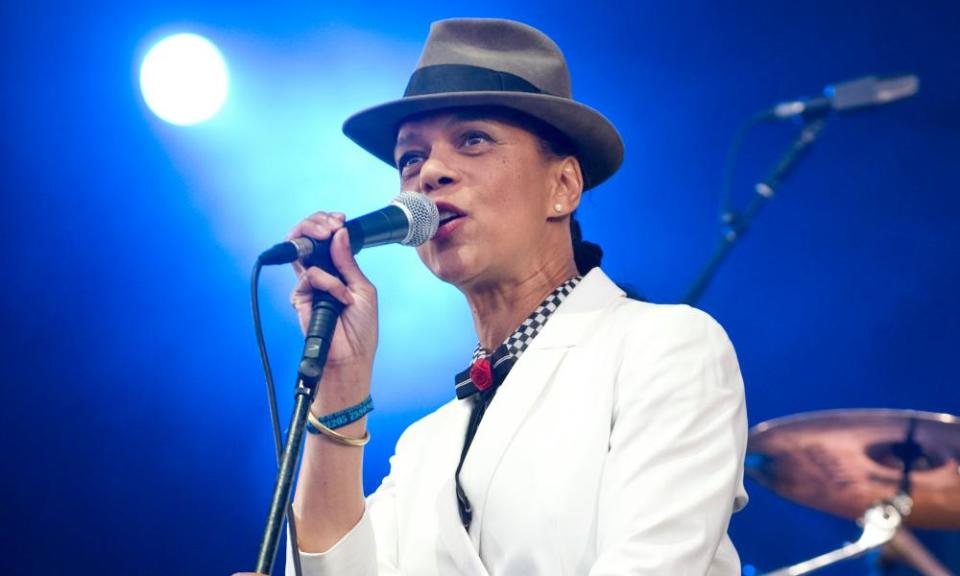Pork pie hats and politics: Coventry pays tribute to 2 Tone legacy
Scrawled on the back of an Embassy cigarette packet are Jerry Dammers’ first attempts to define the 2 Tone “rude boys” after a question from the press in the late 1970s. They like “bluebeat and ska … reggae and soul” and wear “trilbys, bowler and pork pie hats … pinstripe suits, button-down shirts and checked scarves”.
Dammers, who founded the 2 Tone record label in Coventry in 1979, little knew how the description he jotted down would become the image of a hugely popular musical and cultural movement.
His note is part of the first major exhibition devoted solely to 2 Tone, one of the first events on the Coventry city of culture calendar, which started officially in May after a four-month delay due to Covid.
With never-before-seen artefacts and exclusive interviews with band members, it charts the formation of the record label that spawned the 2 Tone movement, focusing particularly on The Specials, The Selecter and other ska-influenced bands including Madness, The Beat and The Bodysnatchers.
“After 40 years, someone has collected everything up, put it in one place and allowed people to see the narrative we were putting out into the world, and how that is impacting all the things that are going on now, like Black Lives Matter,” said Pauline Black, the lead singer of the Selecter, a 2 Tone ska revival band formed in Coventry in 1979.
The 2 Tone genre, which fused traditional Jamaican ska music with punk, was created against a backdrop of high unemployment, deindustrialisation, strikes and a rising far-right movement, and sought to promote a message against the racism and sexism so prevalent at the time.
“We did it through music, and through our style of dress, and black people and white people playing in a band just demonstrated that it was possible for people to get on and find common goals politically and socially,” said Black. “I want young people to come here and see the history that we lived through and how that still resonates today. This conversation is not finished.”
She donated a number of items to the exhibition, including her trilby hat and a 1980s Selecter T-shirt from the US, an example of how 2 Tone gained worldwide popularity.
They sit alongside Dammers’ original handwritten lyrics for the Specials’ single Ghost Town, the No 1 hit tackling themes of urban decay and inner-city violence, and his original sketches of the 2 Tone man, which became one of the movement’s most recognisable images.
“Dammers’ collection in particular was a real coup for us, that’s never been shown before,” said Martin Roberts, the exhibition’s curator. “He’s a perfectionist and there was quite a bit of negotiation to persuade him that this was a project he wanted to be involved in. So some of this stuff is going to be amazing for fans, I think it will blow them away.”

For Black, it’s also an important reminder of Coventry’s importance in the history of the British music scene.
“This didn’t come out of London, it came out of the provinces and that’s an extraordinary thing,” she said. “To get successful bands all occupying space in the pop charts at the time and in the minds of young people in this country, it is a great feat.”
2 Tone: Lives & Legacies runs from 28 May to 12 September at the Herbert Art Gallery and Museum in Coventry

 Yahoo News
Yahoo News 
